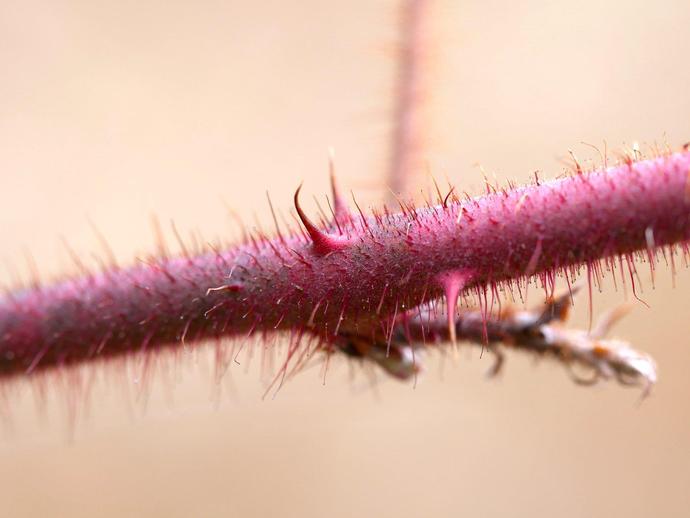March 18, 2021
Ben here with today's edition of #BenInNature presented by our friends at Carter Bank & Trust!
This is a close-up shot of a wineberry vine (Rubus phoenicolasius), and as someone who spends a fair amount of time wandering through forests and fields, it's one of two plants that I am not terribly fond of (the other being Smilax, which we'll look at in a future update).
Wineberry is pretty easy to spot, even in winter; the vines are red, fuzzy, and covered in spines. It produces small flowers in late spring which eventually turn into aggregate fruits resembling raspberries. In fact, the genus Rubus is the same genus to which raspberries and blackberries belong, and wineberries taste sort of like extra-tart raspberries.
This plant is native to China, Japan, and Korea, but it was introduced in North America as an ornamental plant. Of course, like so many introduced species, it quickly spread and has become naturalized in many parts of the country, particularly Appalachia.
One interesting feature of wineberry is that it has a defense mechanism to protect its fruit from insects. As a fruit develops, it grows tiny hairs that are tipped with drops of sticky liquid. These hairs almost resemble those of carnivorous sundew plants, which trap insects and then digest them. However, in the case of wineberry, the hairs serve only to gum up the insect and prevent it from munching on the fruit, as the sticky liquid doesn't contain digestive enzymes.
Given that it produces some pretty tasty fruit, I suppose that wineberry isn't the worst invasive species we have here in Virginia. However, my verdict may change depending on how many times I get scratched by its thorns this summer!
ABOUT #BenInNature
Social distancing can be difficult, but it presents a great opportunity to become reacquainted with nature. In this series of posts, Administrator of Science Ben Williams ventures outdoors to record a snapshot of the unique sights that can be found in the natural world. New updates are posted Monday - Friday, with previous posts highlighted on the weekends. This series of posts is made possible thanks to the support of VMNH Corporate Partner Carter Bank & Trust (www.cbtcares.com)
NATURE PHOTO IDENTIFICATIONS
If you discover something in nature that you would like help identifying, be sure to message us right here on Facebook with a picture (please include location and date of picture) and we'll have our experts help you identify it!

 Hours & Admissions
Hours & Admissions Directions
Directions

